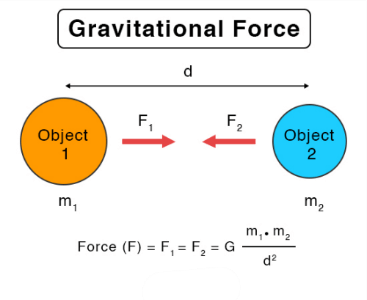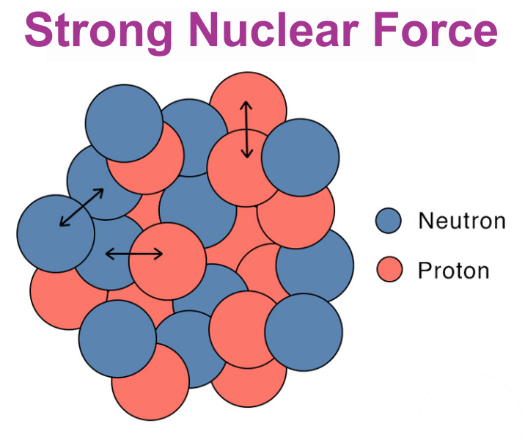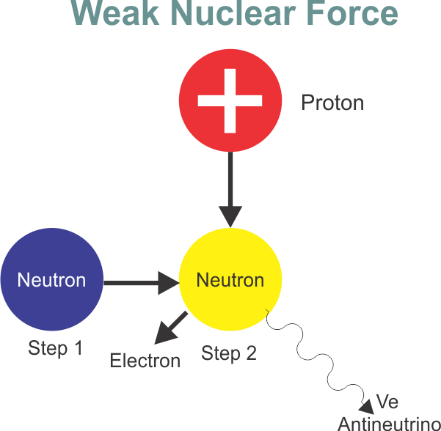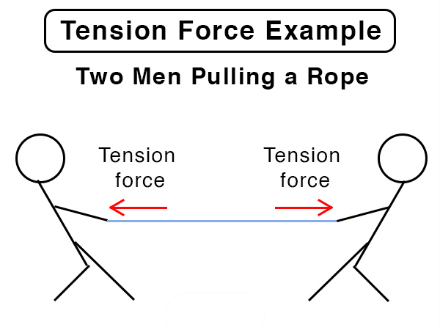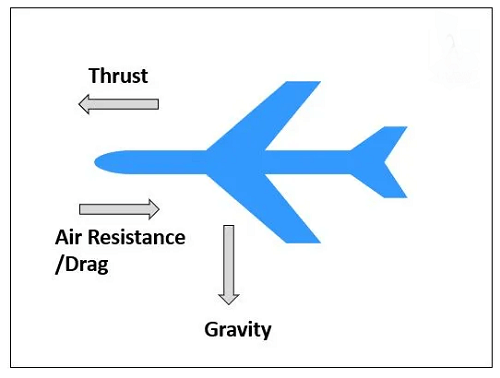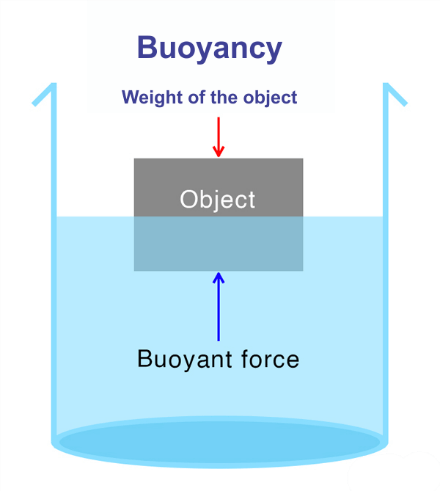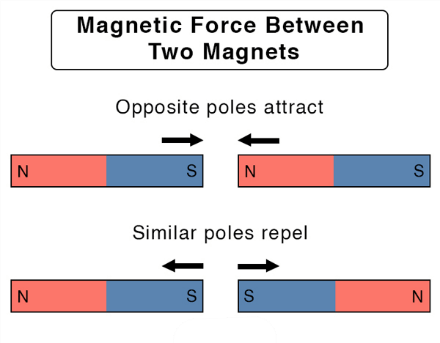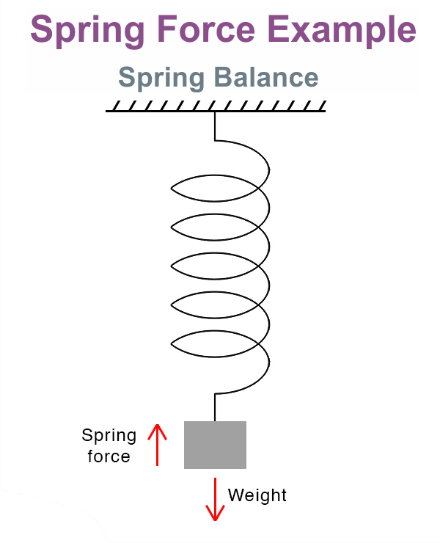Force DefinitionForceForce is a fundamental concept in physics that describes the push or pulls on an object that can change its state of motion or shape. It is an essential quantity used to explain objects' behavior in the physical world. A force can be exerted by one object on another or by an object on itself, such as in the case of a person pushing against a wall. Force is a vector quantity, meaning it has both magnitude and direction. The magnitude of a force is expressed in units of newtons (N), defined as the force required to accelerate a mass of one kilogram at a rate of one meter per second squared. The direction of a force is usually indicated by an arrow, which points in the direction of the force. 
One of the most important aspects of force is its ability to change the motion of an object. When a force is applied to an object, it can cause the object to speed up, slow down, or change direction. This relationship between force and motion is described by Newton's laws of motion, which are fundamental principles of physics. The first law of motion, commonly referred to as the law of inertia, asserts that unless acted upon by an outside force, an object will remain at rest or in uniform motion in a straight line. This law describes the tendency of objects to resist changes in their motion. A stationary ball, for instance, won't move unless it is kicked or struck by another object. The second law of motion relates to force, mass, and acceleration. It states that the acceleration of an object is directly proportional to the net force acting on it and inversely proportional to its mass. This law describes the relationship between the force applied to an object and the resulting change in its motion. For example, a small force applied to a heavy object will accelerate slower than the same force applied to a lighter object. According to the third law of motion, every action has an equal and opposite reaction. This law describes the relationship between two items that interact with one another. For instance, when someone jumps off a diving board, their feet press down on the board. The individual is pushed against the board with equal and opposite force, which causes them to fly into the air. In addition to these laws of motion, force is also important in many other areas of physics. For example, in electromagnetism, forces between charged particles are described by Coulomb's law. In fluid mechanics, forces due to pressure differences are important for understanding the flow of fluids. In astronomy, the gravitational force between celestial objects is responsible for many of the observed phenomena in the universe. In conclusion, force is a fundamental concept in physics that describes the push or pull on an object that can change its state of motion or shape. It is a vector quantity that has both magnitude and direction and is measured in units of newtons. Force is essential for understanding the behavior of objects in the physical world and is described by Newton's laws of motion. It is also important in many other areas of physics, including electromagnetism, fluid mechanics, and astronomy. Units of ForceForce has both a magnitude and a direction because it is a vector quantity. We need to utilize units that account for these elements when measuring force. In the International System of Units (SI), the unit of force is Newton (N). One Newton is defined as the force required to accelerate a mass of one kilogram at a rate of one meter per second squared. Mathematically, this can be written as: 1 N = 1 kg × 1 m/s² In other words, one Newton is the force required to accelerate a one-kilogram object by one meter per second squared. This definition allows us to relate force to other fundamental quantities such as mass and acceleration, measured in kilograms (kg) and meters per second squared (m/s²), respectively. Newton is a relatively small unit of force, and while analyzing forces in the actual world, we frequently need to utilize larger units. The force units frequently used daily are pounds (lb) and kiloponds (kp). It is crucial to remember that these units are not a part of the SI system and that their use is not recommended in scientific contexts. One kilogram force (also known as a kilogram force) is roughly equivalent to 9.81 Newtons, whereas one pound of force equals 4.45 Newtons. Kiloponds are occasionally used in engineering and other technical professions, notably in nations that continue to utilize non-SI units. The dyne is another often employed unit of force in physics. The force used to move a mass of one gram at a speed of one centimeter per second squared is known as a dyne. It has the following mathematical form: 1 dyne = 1 g × 1 cm/s² The dyne is a very small unit of force and is rarely used outside of scientific contexts. However, it is worth noting that the cgs (centimeter-gram-second) system of units, widely used in the early 20th century, was based on the dyne as its unit of force. In addition to these basic units of force, several derived units are used in specific contexts. For example, Pascal (Pa) measures pressure, a force per unit area in fluid mechanics. One Pascal is equal to one Newton per square meter: 1 Pa = 1 N/m² In electromagnetism, the unit of force is often expressed in terms of the Coulomb, which is the unit of electric charge. The force between two charged objects is given by Coulomb's law, which states that the force is proportional to the product of the charges and inversely proportional to the square of the distance between them. The unit of force in this context is the Newton per Coulomb (N/C), which represents the force per unit charge. In conclusion, the unit of force is Newton in the SI system, defined in terms of mass and acceleration. Other force units, such as pounds and kiloponds, are sometimes used in non-scientific contexts. Several derived force units are also used in specific fields, such as Pascal in fluid mechanics and Newton per Coulomb in electromagnetism. Regardless of the unit used, it is important to remember that force is a vector quantity with both magnitude and direction. It is a fundamental concept that underlies many aspects of physics and engineering. Types of ForceA fundamental idea in physics is force, defined as any effect that changes an object's motion. Different kinds of force can be seen throughout the physical universe, each with peculiar properties and effects. We'll look at a few of the most typical types of force in this article.
In conclusion, forces are an essential part of our everyday lives and are responsible for how objects move and interact. The different types of forces have their unique properties and effects on objects. Understanding the properties of these forces is crucial in fields such as physics, engineering, and technology. Newton's laws of motionNewton's Laws of Motion are three fundamental principles describing objects' motion. They were first described by Sir Isaac Newton in the late 17th century and are still widely used today to explain the behavior of objects in motion. In this portion of the article, we will explore the three laws and their implications for our understanding of the physical world. Newton's First Law of Motion states that an object at rest will remain at rest, and an object in motion will remain at a constant velocity unless acted upon by an external force. This principle is also known as the Law of Inertia. Inertia is the property of matter that causes objects to resist changes in their motion. The greater the mass of an object, the greater its inertia. The Law of Inertia significantly impacts how we see the physical world. It explains why things continue to move, such as why planets continue to revolve around the sun and why things at rest continue to be at rest. It also explains the necessity of using seatbelts when driving. Due to their inertia, the occupants in a car that abruptly stops after a collision continue to travel forward. Using seat belts limits the passengers' forward motion and aids in more evenly distributing collision forces over their bodies, lowering the risk of injuries. According to Newton's Second Law of Motion, an object's acceleration is inversely related to its mass and proportionate to the net force exerted on it. In other words, the acceleration of an item increases with the force applied to it, whereas the acceleration of an object with a given force decreases with increasing mass. The Second Law of Motion has important applications in engineering and physics. By understanding the forces acting on an object, engineers can design machines and vehicles to be more efficient and effective. For example, by reducing the weight of a vehicle, engineers can increase its acceleration and fuel efficiency. The Second Law of Motion is mathematically expressed by the equation F=ma, where F is the net force acting on an object, m is the object's mass, and a is the consequent acceleration. The force is measured in Newtons (N), equal to the forces needed to accelerate kilograms of mass at one meter per second squared (m/s2). Newton's Third Law of Motion states that for every action, there is an equal and opposite reaction. In other words, when two objects interact, they exert equal and opposite forces on each other. This principle is also known as the Law of Action and Reaction. The Law of Action and Reaction significantly impacts our view of the physical world. It clarifies why things remain in their current positions, such as why a book stays on a table. The force of the table pushing up on the book counteracts the pull of gravity, drawing it downward. It also explains how rockets can be launched into space. The rocket pushes gases in one direction through its engines, and the gases accelerate the rocket in the other with an equal and opposite force. The three laws of motion are interrelated and work together to explain the behavior of objects in motion. For example, the Law of Inertia explains why objects at rest remain at rest, while the Second Law of Motion explains how an external force can cause an object to accelerate. The Law of Action and Reaction explains how objects interact with each other and how the resulting forces are equal and opposite. Calculations of ForceForce is a physical quantity that describes the interaction between two objects, resulting in a change in motion. It is a vector quantity, meaning it has both magnitude and direction. The unit of force is the Newton (N), named after Sir Isaac Newton, and is defined as the force required to give a mass of 1 kilogram and an acceleration of 1 meter per second square. The force's mass, acceleration, and direction are only a few variables in calculating force. The formula for force is F = ma, where F represents the force in Newtons, m represents the mass in kilograms, and a represents the acceleration in meters per second square. To better understand the calculation of force, let us consider a few examples: Example 1: A ball is thrown horizontally with an initial velocity of 20 meters per second. What is its acceleration if it experiences a force of 10 Newtons in the opposite direction? First, we need to determine the mass of the ball. Let us assume it is 2 kilograms. Then we can use the formula F = ma to find the acceleration. F = 10 N (since the force is given) m = 2 kg (mass of the ball) a = ? 10 N = 2 kg × a a = 5 m/s^2 Therefore, the acceleration of the ball is 5 meters per second squared. To calculate force, one must understand the object's mass, the acceleration it undergoes, and the force's direction. F = ma, where F is the force, m is the mass, and a is the acceleration and formula for force. We may understand how forces act on objects and how they impact their motion by using this formula to explain scenarios encountered in everyday life. Applications of ForceForce is essential in our daily lives, and its applications are widespread, ranging from simple everyday activities to complex scientific experiments.
In conclusion, force applications are numerous and diverse, ranging from simple everyday activities to complex scientific experiments. Force is essential in our daily lives; without it, we cannot perform many of the tasks we take for granted. The study of force is crucial in understanding how the universe works, and scientists continue to explore the applications of force in various fields, from medicine to space exploration. As our understanding of force evolves, we expect to see even more exciting applications of this fundamental concept. Conservation of MomentumConservation of momentum is a fundamental principle in physics that states that the total momentum of a closed system remains constant over time, provided no external forces act on the system. Momentum measures an object's motion and is defined as the product of its mass and velocity. Physics uses the conservation of momentum in various contexts, from the motion of particles in a magnetic field to the interactions between objects. Without it, we wouldn't be able to explain many of the phenomena we see in nature. It is a fundamental law that controls how the universe behaves. First, it must clarify what momentum means to understand its conservation fully. Because momentum is a vector quantity, it possesses both a magnitude and a direction. An object's momentum is measured in terms of its mass times its velocity and always moves in the same direction. The total momentum of a system is the sum of the momentum of all the objects in the system. If no external forces act on the system, then the total momentum of the system is conserved, meaning that it remains constant over time. It is known as the law of conservation of momentum. Mathematically it can be expressed as follows: Σmv = Σmv'. Where Σmv is the system's total momentum before a collision or interaction, and Σmv' is the system's total momentum after the collision or interaction. This equation tells us that the system's total momentum before the collision must be equal to the system's total momentum after the collision. One example of the conservation of momentum in action is the behavior of objects in collisions. When two objects collide, the system's total momentum before the collision is equal to the total momentum after the collision. It means that if one object gains momentum, the other object must lose momentum by an equal amount. In an elastic collision, the system's total kinetic energy is also conserved, which means that the energy before and after the impact is the same. This collision frequently occurs in sports like billiards or others when objects hit and bounce off one another. Some of the system's kinetic energy is transformed into other types of energy during an inelastic collision, like heat or sound. This collision frequently occurs in car crashes or other incidents where things stick together after striking one another. Other areas of physics, such as fluid dynamics and electromagnetic, also have significant uses for conserving momentum. For instance, knowing how fluids behave in pipes or how charged particles move in a magnetic field depends on the conservation of momentum. One of the most significant implications of the conservation of momentum is that it tells us there are limits to what we can achieve with technology. For example, a rocket can only accelerate as fast as the mass it expels as exhaust. The rocket and its exhaust are closed systems, and the system's total momentum must remain constant. The conservation of momentum also has important implications for our understanding of the environment and sustainability. It tells us that any action we take that affects the momentum of a system will have consequences, such as releasing pollutants into the environment or destroying natural habitats. Therefore, we must minimize our environmental impact, develop sustainable technologies, and use resources efficiently. By doing so, we can ensure that future generations have access to the resources they need to live and thrive. In conclusion, the conservation of momentum is a fundamental principle in physics that has wide-ranging implications for our understanding of the universe and our environmental impact. By recognizing the importance of this principle and working on using resources more efficiently and sustain Limitations of ForceForce is an essential concept in physics, representing one object's influence on another, resulting in a change in motion. It is defined as the product of mass and acceleration (F = ma) and is typically measured in units of Newtons (N). While force plays a critical role in describing the behavior of physical systems, its applicability has several limitations in describing the world around us. This portion will discuss some of the key limitations of force in physics.
ConclusionIn conclusion, force is a fundamental concept in physics that describes object interaction. It is a vector quantity with both magnitude and direction, and it can change an object's motion by accelerating, decelerating, or changing its direction. Forces can be categorized into several types, including gravitational, electromagnetic, nuclear, and weak nuclear forces. The study of force is essential in understanding many physical phenomena. For example, force is crucial in determining the motion of objects in freefall, the behavior of waves, and the properties of fluids. The laws of motion developed by Sir Isaac Newton are fundamental principles that govern the behavior of objects in the presence of forces. They state that an object at rest will remain at rest unless acted upon by force, and an object in motion will remain in motion with constant velocity unless acted upon by force. The concept of force has many real-world applications, including transportation, construction, and sports. For example, engineers use force calculations to design bridges and buildings, ensuring they can withstand the forces they encounter. In sports, the use of force is essential for achieving maximum performance. Athletes must apply force correctly to achieve the desired motion and goals. It is important to note that forces can also have negative consequences, such as accidents and natural disasters. Understanding the forces at play in these situations can help prevent them from occurring or minimize their impact. For example, understanding the forces of nature that cause earthquakes can lead to the development of better building codes and disaster preparation.
Next TopicHomogeneous Definition
|
 For Videos Join Our Youtube Channel: Join Now
For Videos Join Our Youtube Channel: Join Now
Feedback
- Send your Feedback to [email protected]
Help Others, Please Share




